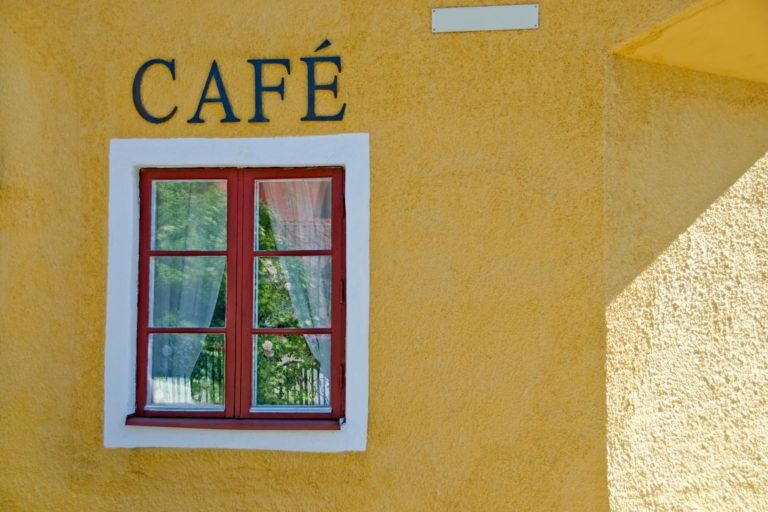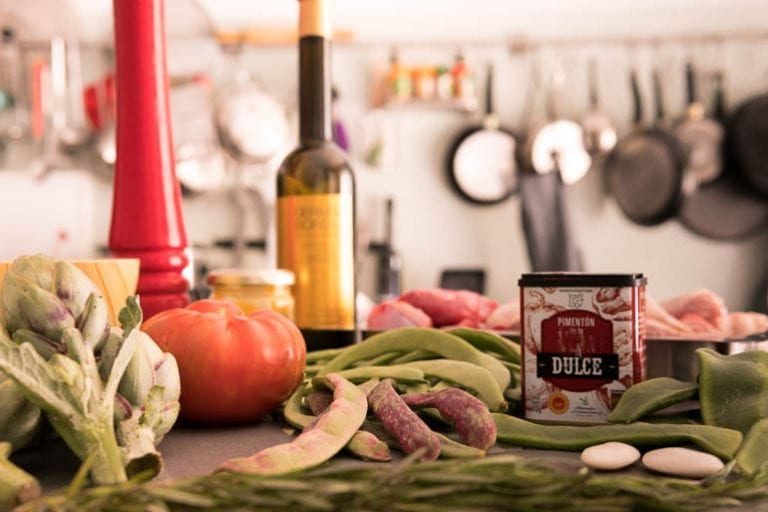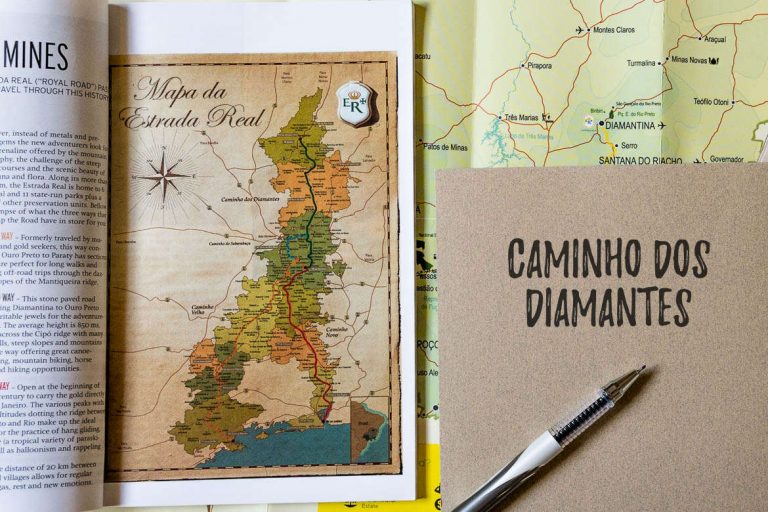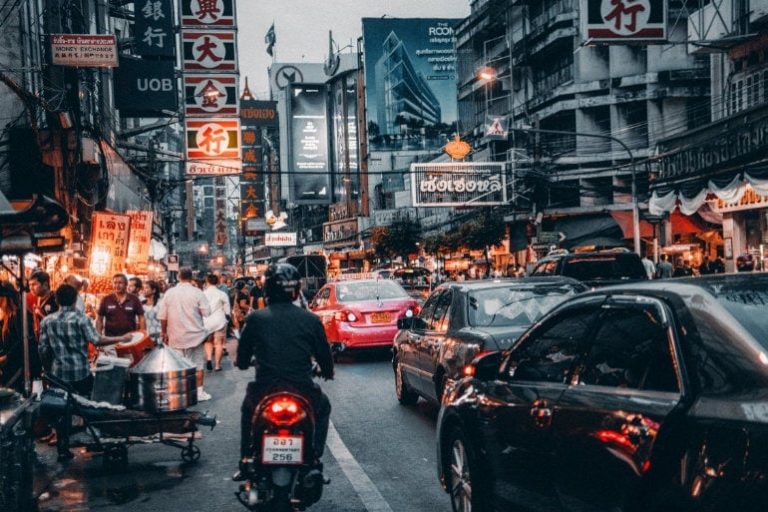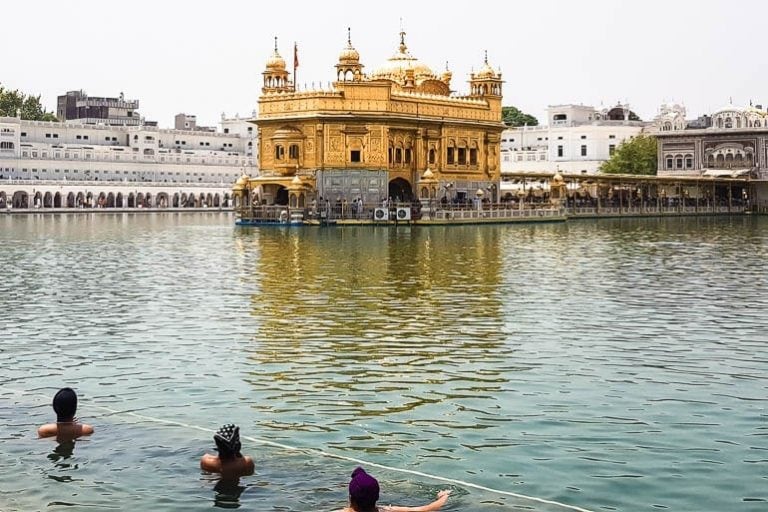How about planning your next food trip to a city recognized by UNESCO for the value of its food culture? After all, just like music and arts, gastronomy is an important cultural heritage, since the culinary traditions of a people represent their identity revealing their habits and customs.
For this reason, aiming at the appreciation and maintenance of typical local cuisines all over the world, the United Nations Educational, Scientific and Cultural Organization (UNESCO) has recognized foods, typical dishes, and food systems as a World Heritage Site, in addition to having the Creative Cities Network – UCCN (Creative Cities Network) project was created.
UNESCO Creative Cities Network
The project, launched in 2004, aims to promote cooperation between cities around the world whose common characteristic is the use of creativity to promote sustainable urban development. The network covers seven creative areas: handicrafts and folk arts, design, cinema, gastronomy, literature, media, and music.
Creative cities are committed to developing and sharing experiences to make them more inclusive and sustainable, establishing partnerships between the public and private sectors and civil society, and fostering professional and artistic exchange programs and networks, among other actions.
To be designated as the Creative City of Gastronomy, the city needs to participate in an annual selection promoted by UNESCO, submitting a proposal that answers determined criteria (e.g.: relationship of gastronomy with the city, the use of traditional knowledge and local ingredients in typical cuisine, sustainable production practices), as well as an action plan.
Currently, two hundred and forty-six cities have been designated Creative Cities, with thirty-six cities in the area of gastronomy. Check out the list below and our tips on planning a trip.
UNESCO Creative Cities of Gastronomy
Afyonkarahisar, Turkey (2019)
Afyonkarahisar or Afyon, is in the central west region of Turkey, famous for its hot springs. Afyon’s history dates back to 3,000 years BC, being inhabited by various peoples, such as Hittites, Persians, Greeks, Romans, Byzantines, and Ottomans.
Afyonkarahisar’s rich history has led to a diverse culinary heritage, with typical dishes such as pastirma (a type of cured meat), sucuk (a type of sausage made with ground beef or chicken, seasoned with an Arabic spice called sumac, garlic, salt, pepper, paprika, and thyme) and the ekmek kadayifi dessert (bread pudding covered with pistachios, nuts and kaymak, a type of Turkish milk-based cream).
Alba, Italy (2017)
Alba is located in the province of Cuneo, in the Piedmont region, an area declared as UNESCO World Heritage Site in 2014 for its beautiful wineries. The city is known as the “Capital of the white truffle”, one of the most expensive delicacies in the world, hosting the famous annual event called Feira Internacional do Tartufo Bianco (White Truffle International Fair).
The city of Alba also played a key role in creating the Slow Food movement, which values food quality, respect for the environment, and fair prices for producers and consumers. In addition to truffles, the city is famous for its wines, peaches, and hazelnuts.
Arequipa, Peru (2019)
Located in the southern region of Peru, Arequipa is the capital of the province that has the same name. Arequipa is surrounded by volcanoes, so much of the city was built with sillar, a white volcanic stone, which led the city to earn the nickname “White City”.
The city has several picanterias, restaurants that serve typical local dishes, and the menu changes every day of the week. Examples of Arequipa dishes are the chupe de camarões (shrimp soup with various spices), rocoto relleno (typical Peruvian pepper that looks like bell pepper, stuffed with sauce, ground beef, and cheese), and the adobo arequipeno (pork made with chicha de jora, a corn-based fermented drink).
Belém, Brazil (2015)
Belém is the capital of the state of Pará, located in the northern region of Brazil. One of the main tourist spots in the city is the open-air market called Ver-o-Peso, one of the oldest in the country, in which different types of medicinal herbs and food are sold, many from the Amazon region.
The city of Belém has several typical dishes that use local ingredients, such as pato no tucupi (duck in tucupi, which is a broth produced through the fermentation of manioc), maniçoba (manioc leaf), tacacá, which consists of a soup made from dried shrimp, tucupi and jambu (an herb native to the northern region) and the famous açaí, traditionally consumed with manioc flour and fried fish.
Belo Horizonte, Brazil (2019)
Belo Horizonte is the capital of the state of Minas Gerais, located in the southeastern region of Brazil. The city is known as the “Brazilian Capital of Bars”, as it holds the impressive mark of 28 bars/pubs per square kilometer.
Belo Horizonte Travel Guide, explore every detail of Minas Gerais capital
One of the main tourist spots in the city is the Central Market, famous for its cheeses, sweets, and handicrafts.
The gastronomy of Belo Horizonte is a separate chapter with typical dishes such as chicken with okra, tutu de feijão (beans), tropeiro beans (recipe that takes beans, manioc flour, cracklings and sausage), leitão à pururuca (crackling suckling pig), and frango ao molho pardo, as well as products that are symbols of the state, such as cheese bread and dulce de leche.

Bendigo, Australia (2019)
Bendigo is located in the state of Victoria, in southwestern Australia. The 19th-century gold mining activity in the region attracted English, Irish, German and Chinese immigrants, leading to a diversity of cultures. The city of Bendigo is famous for its wineries and breweries, as well as being a producer of food, such as cheese, pears, apples, mushrooms, grains, and potatoes.
As a creative city of gastronomy, Bendigo intends to rescue and enhance the Aboriginal food culture (the city is on lands that belonged to the Dja Dja Wurrung tribe, who already had a sustainable food system 40,000 years ago).
Bergamo, Italy (2019)
Located in Lombardy (northern Italy), Bergamo is divided into Lower City, where the commercial part is located, and Upper City, famous for its historical heritage. The parts are divided by impressive Venetian walls, considered a UNESCO World Heritage Site in 2017.
Bergamo is famous for its cheese production, making it the Italian city with the largest number of European certified cheeses “Protected Designation of Origin”.
The city is also known for its polenta corn flour and desserts such as Polenta e Uccelli (sponge cake covered with orange liqueur, filled with almond paste with a bird-shaped chocolate on top) and stracciatella (flakes ice cream), which flavor was invented in the city.
Bergen, Norway (2015)
Bergen is the second-largest city in Norway, being the gateway to the famous Norwegian fjords, rocky valleys that were flooded by the sea. The Bryggen neighborhood, one of the city’s main tourist attractions, was listed as a UNESCO World Heritage Site in 1979. The city is known for its sustainable fishing practices and the production of organic food with more than 3,000 local producers.
A famous tourist spot in the city is the Fisketorget Fish Market. As for gastronomy, Bergen is famous for its wild salmon, Bergensk fiskesuppe (fish soup), and Brunost (typical brown cheese from Norway).
Buenaventura, Colombia (2015)
Buenaventura is on the Pacific coast and is Colombia’s largest port city. The population, mostly of African descent, found in traditional cuisine a form of resilience and pacification, in a place marked by many conflicts involving drug trafficking.
Since 2012, the Colombian government has been promoting policies to preserve and promote this ancestral cuisine in the region.
Buenaventura’s cuisine is based on the diversity of local fruits and, for being a coastal city, on fish and seafood. Some examples are Coconut rice, Cazuela de mariscos, Encocados de piangua (mollusc found in mangroves in the region, prepared with coconut milk, garlic, onion, and coriander), and viche, an alcoholic drink produced from sugar cane.
Burgos, Spain (2015)
Located in the north of Spain, the city of Burgos is known for hosting the Archaeological Site of Atapuerca, considered a UNESCO World Heritage Site in 2000. Archaeological findings have made the city an important center of studies on human evolution. These studies also contemplate gastronomy, since the city is the headquarters of the World Laboratory of Gastronomic Evolution, where research is conducted related to food and the evolution of man.
Some of the typical Burgos dishes are soups, lamb-based dishes, Olla Podrida (a stew made with red beans and pork parts), rice morcilla, and fresh Burgos cheese, made with sheep’s milk.
Read more: Tapas and Pintxos, all about the Spanish appetizers
Chengdu, China (2010)
Chengdu is the capital of Sichuan Province (southwest China), and is known as the hometown of giant pandas. The city is also the home of Sichuan cuisine, one of the four main traditional Chinese cuisines.
Historically, the city was a pioneer in several areas related to gastronomy in China, such as having the first food museum, the first cultural tea center, the first brewery, and the first city in the country to have a professional chef.
Chengdu is famous for chicken Kung Pao, a dish made with chicken, peppers, garlic, chives, ginger, peanuts, and Sichuan pepper, which is actually the bark of the seed from a tree found in the region. In addition, there are Mapo Tofu, Guo Kui (typical pancake), and Hui Guo Rou (pork cooked twice and seasoned with chives).
Panama City, Panama (2017)
Panama’s capital, with 1.7 million inhabitants, Panama City is located between the Pacific Ocean and the rainforest of Darien, characterized by rich biodiversity and marine ecosystem. This led to the development of a gastronomic history based on diverse cultures and natural resources.
Currently, the city of Panama has about 2,500 restaurants and food kiosks and its most traditional dishes carry a lot of seafood and fish, as well as fresh vegetables from their plantations.
The sancocho de gallina is also very popular throughout the country, consumed mainly during lunch, consists of a soup made with chicken meat, tubers and corn cut into large pieces, onions, herbs, and other spices. A comfort food that can be consumed throughout the year.
Cochabamba, Bolivia (2017)
Cochabamba, located in central Bolivia, is the third-largest city in the country and is 2,558 meters above sea level. Its relationship with gastronomy dates back to the Pre-Columbian Era, a time when the region was the largest grain producer in the Inca Empire.
Considered the “Gastronomic Capital of Bolivia”, the city of Cochabamba has Lhajua (typical sauce used in meats and soups made with rocoto pepper, a type of coriander called quilquina, tomato, and onion), the mani soup (peanut soup made with beef or chicken, bones, potatoes, and peas) and silpancho, a kind of dish made of white rice, fried potatoes, fried egg, and steak or breaded chicken.
Dénia, Spain (2015)
Dénia is a coastal city on the edge of the Mediterranean Sea rich in history with the influence of various civilizations, such as Iberian, Roman, Islamic, and Christian. The city is famous for its beaches, the Montgó Natural Park, and its castle, where there is also an archaeological museum.
The city has several high-end restaurants that, inspired by the Mediterranean diet, serve typical dishes based on seafood and food produced in the region. Typical dishes from Dénia include red shrimp from Dénia, Arroz a banda (rice made with squid, fish stock, tomato and various spices such as pepper, paprika and bay leaf), Espencat (roasted pepper, tomato, eggplant, and onion) ) and sea urchins.
Ensenada, Mexico (2015)
Known as Cinderella of the Pacific, the coastal city of Ensenada is in the province of Baja California. Ensenada has the second most important port in the country and the title of World Surfing Reserve (there are only eleven in the world), due to the conditions of its waves and the influence of sport on the culture of the region.
In addition to fishing and mariculture, the city of Ensenada stands out for the production of wine, about 90% of the national production.
The city of Ensenada is famous for its fish tacos and Siete Mares broth, made with shrimp, clams, mussels, fish, squid, octopus, and crab, seasoned with jalapeno pepper. One of its typical drinks is clamato, made with tomato juice, clams, lemon juice, and vodka.
Florianópolis, Brazil (2014)
Florianópolis is the capital of the state of Santa Catarina (southern region of Brazil), located on an island and well known for its beautiful beaches. The city is one of the Brazilian capitals with the highest Human Development Index (HDI).
As for gastronomy, the city of Florianópolis is famous for its seafood dishes. One example is oysters, as the capital is the largest oyster producer in Brazil. Other famous dishes on the island are the Sequência de Camarões which consists of shrimp prepared in different ways (fried, roasted, breaded, steamed) and fish such as mullet and anchovy.
Gaziantep, Turkey (2015)
Located south of the Anatolian region in Turkey, Gaziantep is one of the oldest cities in the world. It has a history that goes back to the Paleolithic Period, being home to several peoples. Due to its special location on the Silk Road, the city of Gaziantep has grown to become an important center of beliefs, traditions, and scientific knowledge with a multitude of museums, archaeological sites, and places of historical importance.
Gaziantep has a wide variety of agricultural products, such as grains, vegetables, fruits, and dozens of different local herbs and spices capable of creating more than four hundred different dishes. The city also has an immense diversity of cooking techniques and ways of consuming food – an example is kebab, one of Gaziantep’s most famous dishes, which has more than thirty varieties.
Hatay, Turkey (2017)
Situated in southern Turkey, in the heart of the Amik valley, the city of Hatay has a multicultural identity inherited from its location on the ancient Silk Road. There is said that thirteen world civilizations have influenced and shaped their cuisine with cuisines from the Middle East, Anatolia, and the Mediterranean.
Typical Hatay dishes include Zeytin Salatası (olive salad) which is made by placing green olives one by one in a copper bowl and served with olive oil and pomegranate syrup. Another famous dish is the Abugannus, made from eggplants, tomatoes, and peppers grilled over hot coals or in the stone oven, also served with lots of olive oil and pomegranate syrup.
Hyderabad, India (2019)
Known as the City of Pearls, Hyderabad is located in the state of Telangana, south-central India. It is the second-largest city in the country and an important meeting point between the northern and southern parts, being famous for its historical monuments such as the Charminar (Mosque of the Four Minarets) and the Golconda fort.
Local cuisine is a melting pot of several different cultures. Among the most famous dishes in India is the traditional Hyderabadi Biryani, found anywhere in the city, made from rice, lamb or chicken, vegetables, and many spices. Qubani Ka Meetha is a dessert made from dried apricots and covered with almonds, usually eaten with ice cream.
Jeonju, South Korea (2012)
Jeonju is a city known for its gastronomy and food industry. The city has a tradition in the production of foods such as rice, fish from the Yellow Sea, and fresh vegetables, and is recognized as a reference for high-quality traditional Korean food.
The Jeonju Bibimbap Festival is the largest gastronomic festival in the city, gathering around one hundred thousand people every year and has been taking place since 2007.
One of Jeonju’s most traditional dishes is Bibimbap, which gives the festival its name, considered the Korean national dish. It is served in a huge bowl containing glutinous rice, a variety of vegetables, meat, and a red pepper paste, the gochujang.
Macao, China (2017)
Located on the western bank of the Pearl River Delta, the city of Macao was a colony of Portugal and an important commercial center. Macanese cuisine has a lot of influence from Portuguese maritime culture, with spices and food cultures brought from Africa, India, and the Malaccan coast that have been incorporated into local dishes over the centuries. This combination of oriental and western cuisine, called “Fusion Cuisine”, made Macanese cuisine to be designated as intangible heritage by the local government.
A typical Macao dish is minchi, which consists of ground beef, diced potato chips, and fried egg, accompanied by glutinous rice.
Mérida, Mexico (2019)
Mérida is the capital of the state of Yucatán in Mexico and is in the southeast of the country. The city has a reputation for offering a high level of quality of life with many wooded areas. In 2000, Mérida was named American Capital of Culture thanks to its inclination towards cultural activities with many libraries, theatres, art galleries, and museums.
The local cuisine of Mérida is a little different from traditional Mexican cuisine due to the geographic isolation of the Yucatan region, having a Mayan origin and European influence, especially Spanish and also from the Caribbean. Among the most used ingredients are peppers and pork, as in the case of Cochinita Pibil, a dish in which the meat is marinated with annatto, grapefruit, and various condiments, to later be roasted in the oven on banana leaves.
Cooking Tips: Learn how to cook with banana leaf
Östersund, Sweden (2010)
Located in a sparsely populated region in central Sweden, the city of Östersund is appreciated for its gastronomic culture based on sustainable local foods and inspired by long-standing culinary traditions.
The city is the main supplier of food products in its region, in addition to standing out for sustainable practices such as the use of biofuel and biogas in its heating systems.
Typical food products in the region range from sausages to chocolates and truffles. The city of Östersund is also home to a number of craft breweries, cheese makers, and other dairy products derived from goat or cow’s milk.
Overstrand Hermanus, South Africa (2019)
Located in the Western Cape province in South Africa and bathed by the Atlantic Ocean, the city of Overstrand Hermanus is close to Cape Town and has unique nature with countless resorts.
The city of Overstrand Hermanus also accommodates many vineyards, cafes, bars, pubs, and a wide variety of restaurants, being possible to try meats of different types, such as ostrich fillet in pepper sauce, venison steak, and lamb shank marinated in red wine. A dish from the Cape Town Malaysian people is Bobotie, a ground meat curry pie that is baked in the oven with a topping of beaten eggs and milk.
Paraty, Brazil (2017)
Paraty is in the state of Rio de Janeiro and was considered a UNESCO World Heritage Site in 2019 for its natural beauty and rich historical heritage. The city is also famous for hosting the Paraty International Literary Festival (FLIP).
The influence of indigenous, Portuguese and African culture in Paraty is reflected in typical dishes of the city, such as paçoca de banana da terra, farofa de feijão and dishes based on fish and seafood, such as Azul Marinho (fish with green banana and manioc flour) and Camarão Casadinho.
The city is also known for producing artisanal cachaça, a drink made from sugar cane.
Parma, Italy (2015)
Located in the north of Italy, Parma and its territory are universally known for their incomparable gastronomic heritage that offers products to the whole world, such as Parmigiano Reggiano (Parmesan cheese) and Prosciutto di Parma (Parma ham), basic ingredients for numerous recipes.
Parma’s agri-food sector is represented throughout the food production chain, from the cultivation of raw materials to the promotion of cuisine through events, gastronomy schools, and food museums.
The city is also famous for its tourist spots, such as the Cathedral of Parma, the National Gallery, and the Palazzo della Pilotta.
Phuket, Thailand (2015)
The city of Phuket is located on the largest island in Thailand, also called Phuket. With a population of nearly 400,000, Phuket is the gateway to several Thai islands known for their paradisiacal beaches.
What to eat in Thailand: Discover 30 traditional Thai dishes
One of the main events in the city is the Annual Old Town Festival, a very important festival in the perpetuation and promotion of traditional expressions in the fields of cuisine, handicrafts, folk art, and visual arts in general.
Among the typical dishes of Phuket, the massaman curry (a curry of Muslim origin) stands out, with coconut milk, potatoes, roasted peanuts, bay leaves, sugar, cinnamon, and tamarind sauce, as well as meat or chicken.
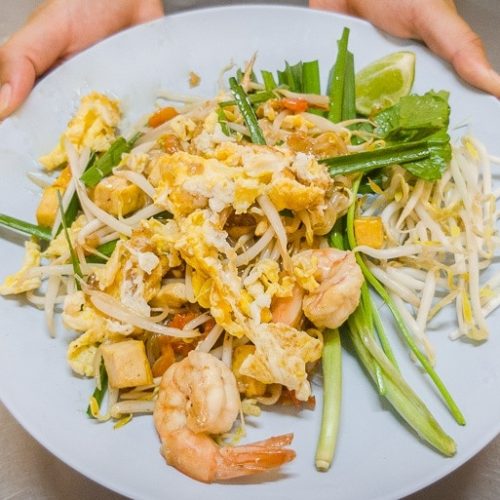
Popayan, Colombia (2005)
Popayán is a city in southwest Colombia with approximately 300,000 inhabitants. The city is known as “White City” because it houses several buildings painted in white, and for its historic center, the site of many traditional celebrations such as Holy Week, designated by UNESCO as an intangible cultural heritage of humanity since 2009.
Popayán cuisine is a mix of three traditions, pre-Columbian, African and Spanish. Its wealth is not only in the flavors but also in the symbolism, rites, legends, and customs of the people.
Examples of typical Popayan foods are chulkiness, made from sugar cane kernels, tortilla soup, cornbread, and many canned foods that use peanuts as an ingredient.
Portoviejo, Ecuador (2019)
Capital of the Province of Manabí, in Ecuador, Portoviejo is located in the center of the country’s coastal region, one of the most populous areas. The city has been called the “City of Royal Tamarinds” since colonial times due to the production of tamarinds in the lands where the city was established.
Manabí has a rich and varied cuisine, being the most important province in terms of gastronomy in Ecuador. Typical Portoviejo dishes include fish or shrimp viche, a kind of stew with many vegetables.
Rasht, Iran (2015)
Rasht is located on the Caspian Sea, in the Islamic Republic of Iran, and has a gastronomy sector that is a true cultural heritage thanks to the rich variety of natural resources of the region and its tradition, with ancient recipes and exclusive methodology.
The city of Rasht has several typical dishes, such as Kateh-Kebab (beef marinated for 24 hours in a mixture containing olive oil, onion water, and yogurt and then grilled), Sour Kebab (beef or lamb seasoned with onion, garlic, pomegranate juice, and chopped nuts) and Mirza Ghasemi (grilled eggplant with garlic, fresh tomatoes, and eggs).
San Antonio, Texas, United States of America (2017)
The city is in the state of Texas, southern United States. Attracted by the San Antonio River, Spanish settlers settled in the region around 1700. A century later, European, Asian, and African immigrants settled in the region, contributing to the city’s cultural and culinary diversity.
San Antonio is known for Tex-Mex cuisine, a fusion of Mexican and American cuisine, with examples of cheese enchiladas, puffy tacos, and stewed meat. Another famous dish in San Antonio is Menudo, a traditional Mexican soup made with beef stomach in a broth based on the red chili pepper.
Shunde, China (2014)
Shunde is one of the cradles of Cantonese cuisine, located in the center of the Pearl River Delta, with Guangzhou to the north and Hong Kong to the south.
Local chefs are concerned with colors, aromas, and flavors, in addition to the nutritional value and method of food preparation, opting for fresh, seasonal ingredients.
Fish is an essential ingredient in Shunde cuisine, thanks to its proximity to the Pearl River, with mud carp, Ju fish, and slime carp being popular. Another typical dish of the city is the milk pudding with two layers, made with milk, egg whites, and sugar.
Tsuruoka, Japan (2014)
The city is in Yamagata province (Tohoku region) and is known mainly for hosting the Dewa Sanzan (Three Mountains of Dewa, sacred areas for the Shugendo religion, which mixes elements of Buddhism and Shinto).
The mountains have a strong influence on Tsuruoka cuisine. An example is the shōjin ryōri, a style of vegan Buddhist cuisine that can be experienced by mountaineers at the Saikan temple, located on the top of one of the mountains.
The city, surrounded by mountains, plains, and the Sea of Japan, produces various types of food and has several typical dishes, such as gomadōfu (tofu made with sesame) and dadacha-mame, green soy produced in the region.
Tucson, Arizona, United States of America (2015)
With a 300-year tradition of vineyards, orchards, and livestock, the city of Tucson, located in the Sonoran Desert, Arizona, has the largest agricultural history in the United States. Tucson has a distinctive cuisine, developed from a very diverse cultural history and with traditional food preparation techniques passed down through generations. Known for its strong culinary sector, the city has innovative food security programs and regulations, with a focus on sustainable production and distribution.
Tucson has more than two dozen annual food festivals, fairs, and tastings, which showcase the region’s food specialties and traditions. An example is the Tucson Meet Yourself event with shows, crafts, and typical foods, attracting more than 100,000 people annually.
Yangzhou, China (2019)
Yangzhou is located in the central part of Jiangsu province and is located on the north bank of the Yangtze River, the most important river in China. The city was once one of the main economic and cultural centers in the country thanks to the salt trade. Currently, Yangzhou is an important center for the transportation of goods and is quite famous for its jade sculptures.
The cuisine is a source of pride for the city, and the dishes, even the cheapest, are well prepared. Yangzhou fried rice is especially famous, made with eggs, mushrooms, carrots, peas, bamboo shoots, and seafood or meat. Dishes based on soy cheese (tofu) are also popular, such as spicy tofu and Wensi tofu (soup).
Zahlé, Lebanon (2013)
With a population of 150,000, Zahlé is the capital and largest city in the province of Beqaa, Lebanon.
Famous for its pleasant climate and natural beauty, it is also known as the “City of Wine and Poetry” for having a culture that revolves around grapes, wine, and arak, a distilled drink with an anise flavor, in addition to being the birthplace of many poets and writers in the past.
Its most important cultural event is the Wine Festival that takes place every year in September with concerts, plays, poetry recitals, and artistic exhibitions.
The Berdawni River is a historic site famous for its waterfront restaurants, offering traditional food with many dishes made with trout, which are considered a specialty of the Hermel and Anjar communities.

